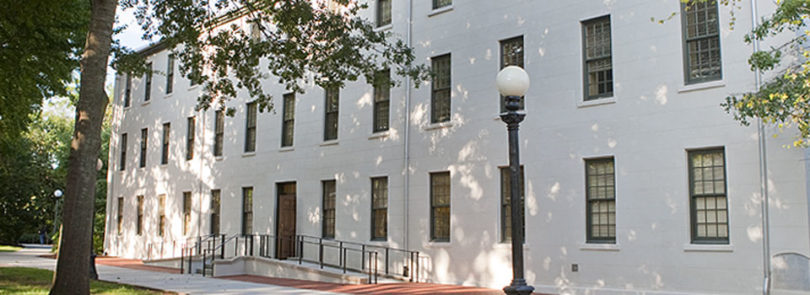New College, one of the oldest buildings on the UGA campus, has undergone extensive renovations that have brought the exterior back to its 1875 appearance while creating modern classroom space inside.
New College will house the Office of the Vice President for Instruction, the Office of Academic Fiscal Affairs, the Office of Faculty Affairs and the Office of Academic Planning.
In addition to administrative offices, the building will include a modern classroom as part of an ongoing effort to return classroom space to historic North Campus. It also will house a collection of relics unearthed from beneath the building during the renovation process. The relics date back to the earliest days of the university, when the building functioned as both a classroom and residence hall.
“I am pleased that President Adams decided to place a classroom in this building,” said Morehead. “The Office of the Vice President for Instruction, among other units housed in New College, should be located in a place where courses are being taught.”
In 1830, New College was destroyed by fire, leaving only the exterior walls. The facility was rebuilt in 1832 without the fourth floor that was part of the original structure. For the next several decades, it served as a multipurpose facility.
By the early 1900s, New College was the location of the School of Education. In the late 1930s, a general renovation took place that allowed the growing School of Pharmacy to occupy the facility. Most recently, New College housed the Office of University Architects for Facilities Planning and the administrative offices of the Franklin College of Arts and Sciences.
The aesthetic goal of the recent $4 million renovation was to return New College to its 1875 appearance. This involved restoring the scored stucco on the exterior as well as the 9-over-9 window pattern and installing a historically appropriate standing-seam metal roof.
“It’s great when a historic building like this gets the attention it needs,” said Scott Messer, historic preservationist in the Office of University Architects and project manager. “That means a lot to those who use the facility and those who care about the history behind it.”
Remnants of a former building and artifacts dating back more than 200 years were uncovered beneath the foundations of New College during the recent renovation. Workers unearthed a brick floor about 7 feet beneath New College’s present-day ground level. The cross-laid floor may have been part of a kitchen or other room used by the first students or faculty at UGA, according to Danny Sniff, associate vice president for facilities planning.
Among the other artifacts found are a handmade spoon, wrought iron nails, blown-glass bottles, glazed cookware and an instrument that resembles a modern fire poker. The crew also found a pottery bowl that dates from Georgia’s late prehistoric Lamar period (1350-1600 AD), suggesting that someone at the university found and kept the piece of Native American culture.







